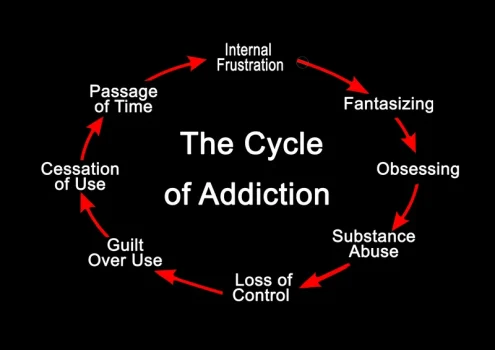
However, chronic cannabis use may lead to CHS demonstrating its complex dual effects 10,20. Indeed, with any syndrome that results in frequent vomiting, there is a Substance abuse concern for a disorder of electrolytes and fluid balance in the body. Patients who fail to respond to antiemetic therapy are at high risk for dehydration and resulting in nutritional deficiencies. Other known complications of forceful and uncontrolled vomiting include aspiration and subsequent pneumonitis or aspiration pneumonia as well as injury to the esophageal wall such as Boerhaave’s syndrome. Some people with conditions like epilepsy, multiple sclerosis, chronic pain and nausea believe that marijuana helps them.

Pediatric Patients
Researchers also explore the potential connection between CHS and cyclical vomiting syndrome; cyclical vomiting syndrome involves similar symptoms but is not cannabis-related. People who develop CHS are usually long-term cannabis users, though the specific trigger point varies by individual. This disruption in the body’s processing of THC may be unique to certain users, making CHS more difficult to predict. Unlike the initial anti-nausea effects of cannabis, repeated and long-term exposure seems to cause the opposite reaction in certain people, triggering the syndrome’s cycle of severe nausea and vomiting. Compulsive hot showering or bathing may be critical in distinguishing CHS from CVS and other conditions with similar symptoms.
Deterrence and Patient Education
These usually happen for 3 to 4 days but can last as long as 1 week in bad cases. As CHS is a new diagnosis, the manufacturers of these drugs did not design them for treating CHS, but a doctor may opt to prescribe them for this use. D’Souza speculates that it may have to do with some people’s endocannabinoid systems.
- A thorough history, physical examination and directed testing of differential diagnoses may assist in ruling out these diagnoses.
- However, it’s important to note that these treatments address only the symptoms, not the underlying cause.
- The objective of our research was to establish a clinically meaningful description of CHS and its presentation, to evaluate diagnostic challenges in identifying this syndrome, and to describe effective treatment options.
Patient Education

Researchers are continuing to examine potential treatment options for CHS. Symptoms are most common in early middle-aged adults who have used cannabis regularly since adolescence. It’s thought that genetics may play a role because only a small number of people who regularly use cannabis develop CHS. “So, people might not be actively smoking it but still might have a fairly significant amount of THC coming out of your system, and it can be enough to trigger symptoms,” he said. It’s not clear if some people are more prone to the syndrome than others. However, Camilleri said that men are more likely to develop it, as are people who have used marijuana frequently and for many years.
Treatments for Alcohol Use Disorder

First documented in 2004 in Australia, CHS is gaining attention as cases rise, especially in areas where cannabis has been legalized. The purpose of this review is to describe cannabinoid hyperemesis syndrome (CHS), which is thought to be induced by long-term cannabis use, and provide clinical pharmacists with information to manage the hyperemetic phase of CHS. Public health responses to CHS are hampered by a lack of comprehensive data and research.
- For example, THC has two main metabolites (11-hydroxy-delta9-tetrahydrocannabinol or 11-OH- THC and 11-nor-9-carboxy-THC-delta9-tetrahydrocannabinol or THC-COOH) but it also has over 100 minor metabolites 40.
- Non-English publications were excluded unless an English abstract was available.
- These supportive treatments can help people during the hyperemesis stage of the condition, but recovery depends on the person stopping their use of marijuana.

At minimum, this investigation should prompt immediate, comprehensive studies comparing outcomes between clean and contaminated cannabis. We need research that actually considers pesticide interactions instead of assuming cannabis is the culprit from the start. We need testing protocols that can detect the full range of agricultural chemicals being used on cannabis, and we need enforcement mechanisms that actually remove contaminated products from the market. The state discovered that 25 out of 42 legal cannabis products exceeded pesticide limits during random testing. Some products contained two dozen different pesticides – turning what should be medicine into a toxic cocktail. Over 250,000 contaminated vapes and pre-rolls are currently sitting on dispensary shelves, and private labs are filing lawsuits over fraudulent testing practices.
- Approximately 9% of individuals who use cannabis report dependence at some point in their use 5.
- It doesn’t appear that CHS is caused by marijuana that is laced with other substances, instead, the main factor seems to be how frequently people are consuming THC and how much THC they are consuming.
- Research suggests that CB1 receptors regulate the effects of marijuana on the gastrointestinal tract.
- This characteristic partially explains its prolonged elimination half-life.
- The almost pathognomic aspect of a patient’s presenting history is that their symptoms are relieved by hot baths or shower.
The Importance of Seeking Help from an Addiction Treatment Center
A multimodal approach, including structured psychotherapy such as cognitive behavior therapy (CBT), along with addiction counseling in educating patients about the canabis syndrome consequences of cannabis use, is necessary 92. Some patients may require rehabilitation programs to monitor the patient’s progress, ensure treatment adherence, and offer therapeutic support to achieve and maintain recovery. Mutual-help groups such as Marijuana Anonymous are beneficial to patients without access to structured programs. Sympathetic and parasympathetic systems play interlinked roles in emesis. The chemoreceptor trigger zone sends signals via the efferent vagus nerve, triggering responses in the parasympathetic and sympathetic nervous systems.